Find Workers
⌄
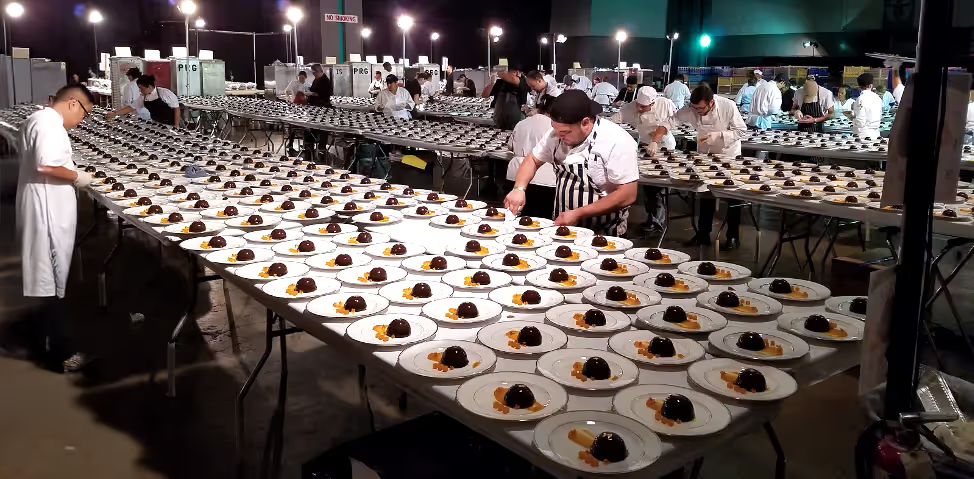
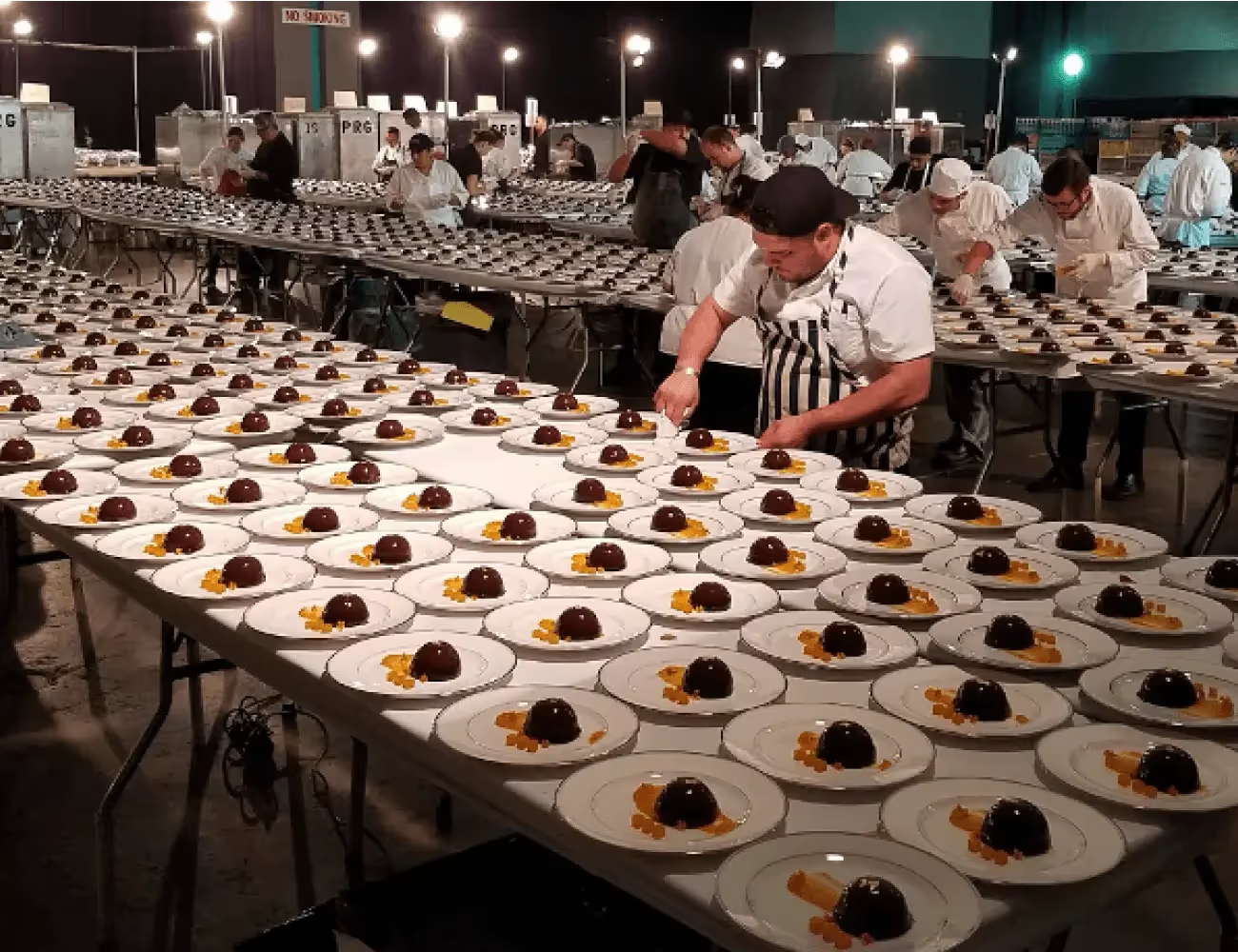
As a guest enters the dining room, one of them asks you, "Where's the buffet?" You reply, "Today there is a special plated service. We'll bring the courses to you at your table."
A plated service means the food is carefully prepared in the kitchen and then delivered by a server to the guests seated at a table. Sometimes people call it "sit down service," However, "plated" is the proper term.
Plated service requires that all servers follow specific rules of etiquette to create an atmosphere of fine dining. These rules were introduced to France by Catherine de Medici in the 1500s and still govern how tables are set, how courses are served, and how courses are eaten. By implementing these rules of etiquette, servers set the tone for plated service.
Hospitality in the food & beverage industry is always about the experience. Plated service is a key element in a fine dining experience! For Spanish language support, check out our article, Que significa realmente el trabajo flexible para los trabajadores de la industria de la hospitalidad?
This informative document covers the basics of serving and clearing a plated meal. For new staff, it includes a review to introduce what works best. For veteran servers, this document provides a quick refresher on proper protocol.
Seven key takeaways:
The pre-event meeting covers all of the most vital information servers need to know to make an event successful. Below are the most important points that must be noted when plated service is in play:
Clearing Pace is the pace at which the tables are to be cleared for the next course. Pacing may be casual, 60-80-100%, assertive, or aggressive.
Menus are printed paper materials for guests that cover what is being served, the course order, and potential allergens and alternative options.
One Sheet is a summary of the event's main details and includes the following information:
Partners or Team is a list of the other servers you'll be working with if there are other servers who have been hired for this event.
Place Cards are put on the dining tables indicating where a guest is to be seated and Escort Cards are placed on a table near the entrance for the guest to collect and indicate which table they are assigned to. Servers must know if the place-escort cards are set out and whether or not the cards indicate the guests' preselected meal.
Pass Location is where prepared dishes transfer from the BOH (Back of House) to the FOH (Front of House).
Scullery Location is the space allocated for dirty plates, flatware and glassware.
Service Methods follow different service models, which can include: solo, A & B waiters, zone or area sweep, serving team, or restaurant switch out.
Service Station Location(s) is where extra, flatware, glasses, water, wine, condiments, etc. are stored for service.
Table Assignment(s) includes the tables you'll be serving, as well as your other responsibilities for the event such as food service, beverage service, and table clearing.
Table Cover Positions are the table cover positions, which are defined differently for circular, square, and differently shaped tables. Servers must know where position #1 is located. Position #1 is usually facing North, the head table, or a stage. Later when a special request needs to be handled, the direction of "Table 3, Cover 4" is easy to follow.
TCO (Table Cover Order) organizes and confirms the meal that has been selected at the table(s). This information is relayed to the Expeditor at the pass.
TSO (Table Service Order) summarizes what guests ordered by cover position as well as the server and the order in which the tables are served.
Zone Assignment & Captain is the zone-section of the dining area where you will be assigned to work. Each section will have a Zone Captain, who you'll report to for directions.
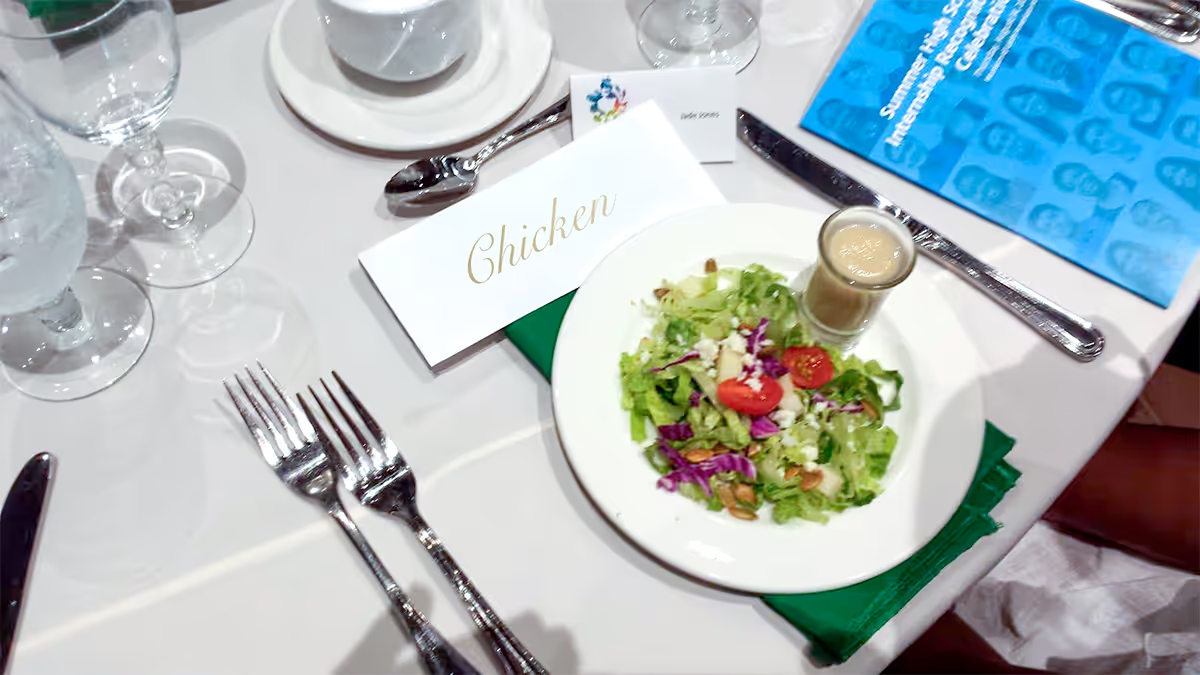
Generally the entrée is preselected by the host-planner, as a single or double entrée. Often, guests will pre-select a protein and their order is indicated on the place/escort card. For example, Star = Beef, Cross = Chicken.
At events where guests have pre-selected their meal choice, every guest meal choice must be confirmed by servers to avoid serving an incorrect meal to a guest. Use a TCO (Table Cover Order) sheet or order pad to confirm the guests order at each position.
Keep an eye out for when the guest:
As the guests are seated, the assigned server approaches the table. The server welcomes guests and confirms each guests' meal choice (e.g. "Hello. Just confirming your meal selection. Are you having the Fresh Branzino or the Free-range Chicken Kiev?"). After the guest responds, the server says, "Thank you." and records the selection on the TCO sheet.
Once the meal selections are confirmed with guests, the information is then relayed to the Expeditor. The server or the expeditor enters the meal selections on a TSO (Table Service Order). B = Beef, C = Chicken, F = Fish, V=Vegan
Once the meal selections are confirmed with guests, the information is then relayed to the Expeditor.
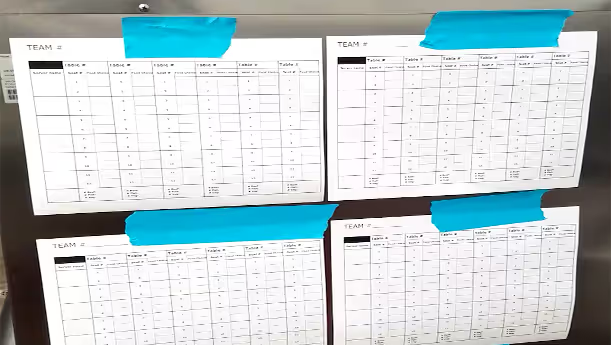
The server or the expeditor enters the meal selections on a TSO (Table Service Order). As meals are served to the tables, the TSO is marked—so we know which tables and guests have received their orders.
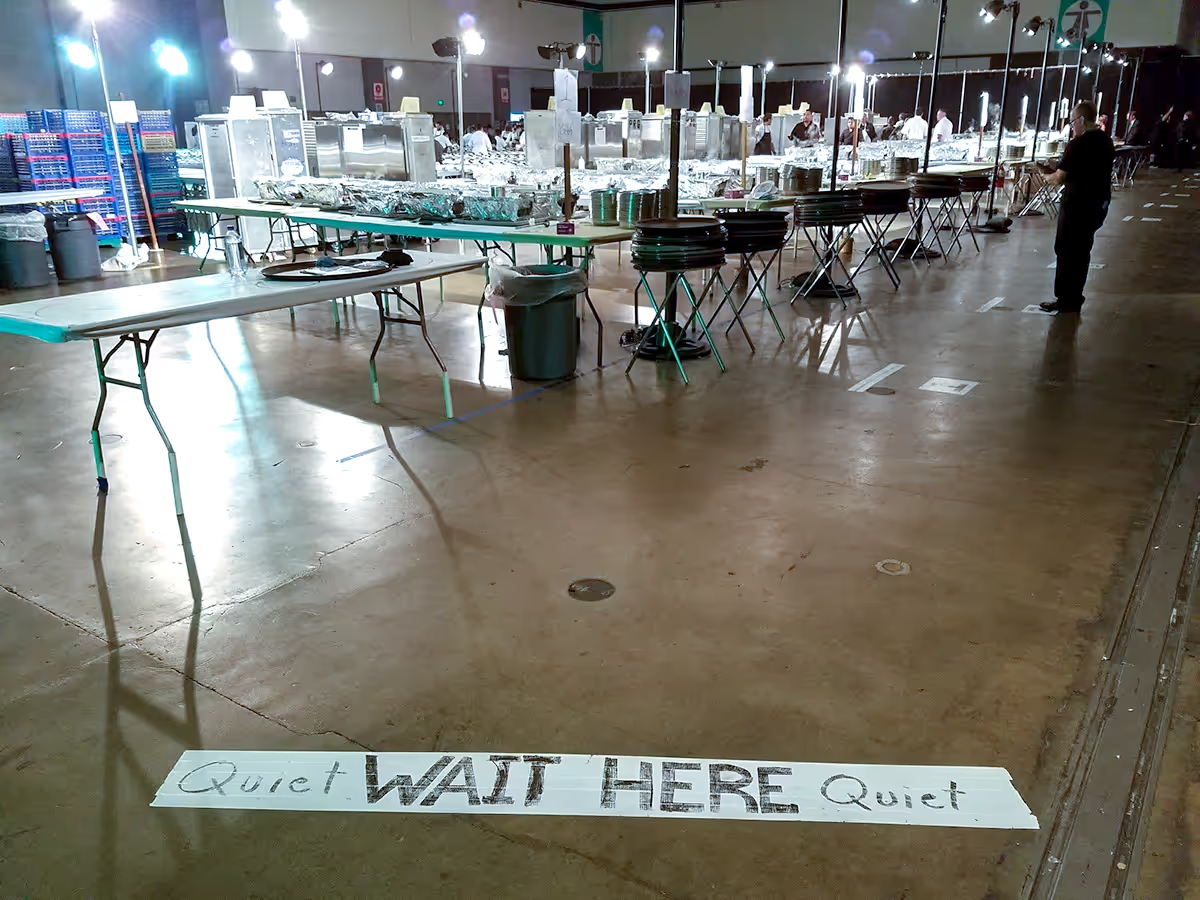
Collect plates from The Pass or from large oval trays on tray stands that are delivered to a location close to the guests' table.
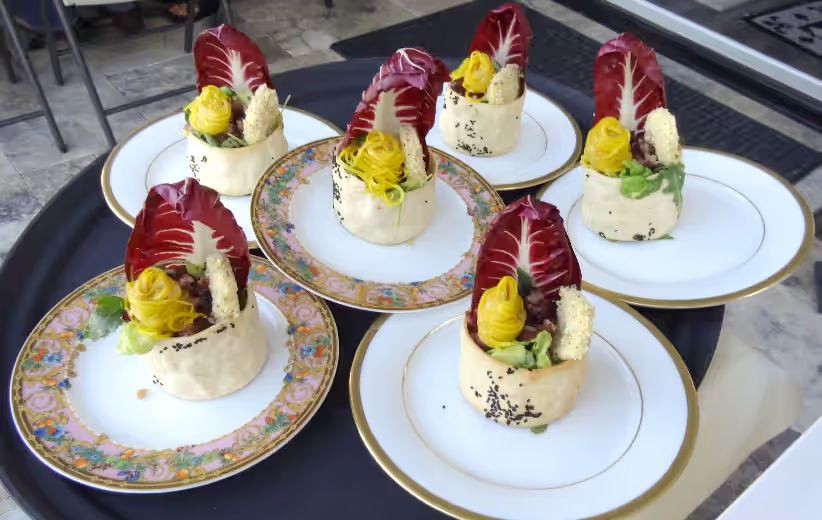

Review the posted TCO for all orders and specifics according to the table and position. Know the contents of the plate and how it is to be placed in front of the guests. Usually the protein is placed at the 6 o'clock position—meaning closest to the guest. If you have not received instructions on plate placement, ask. But, do not rotate plates in front of the guests!
Important things to remember while plating food:

As you collect the plates, position your fingers on the underside to pull the edge rim in firmly toward the space against your palm—just below your thumb. Keep plates level, so sauces and juices don't run.
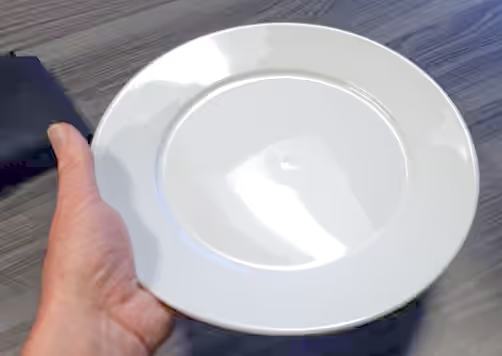
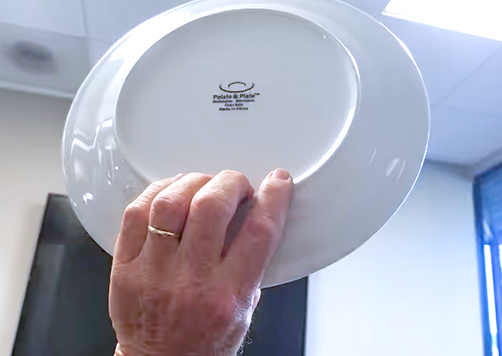
Important things to remember while handling plates:
Serve with the left hand. This means that, with rare exceptions, you'll serve guests from their left side with your left hand. This service style is referred to as "American Service."